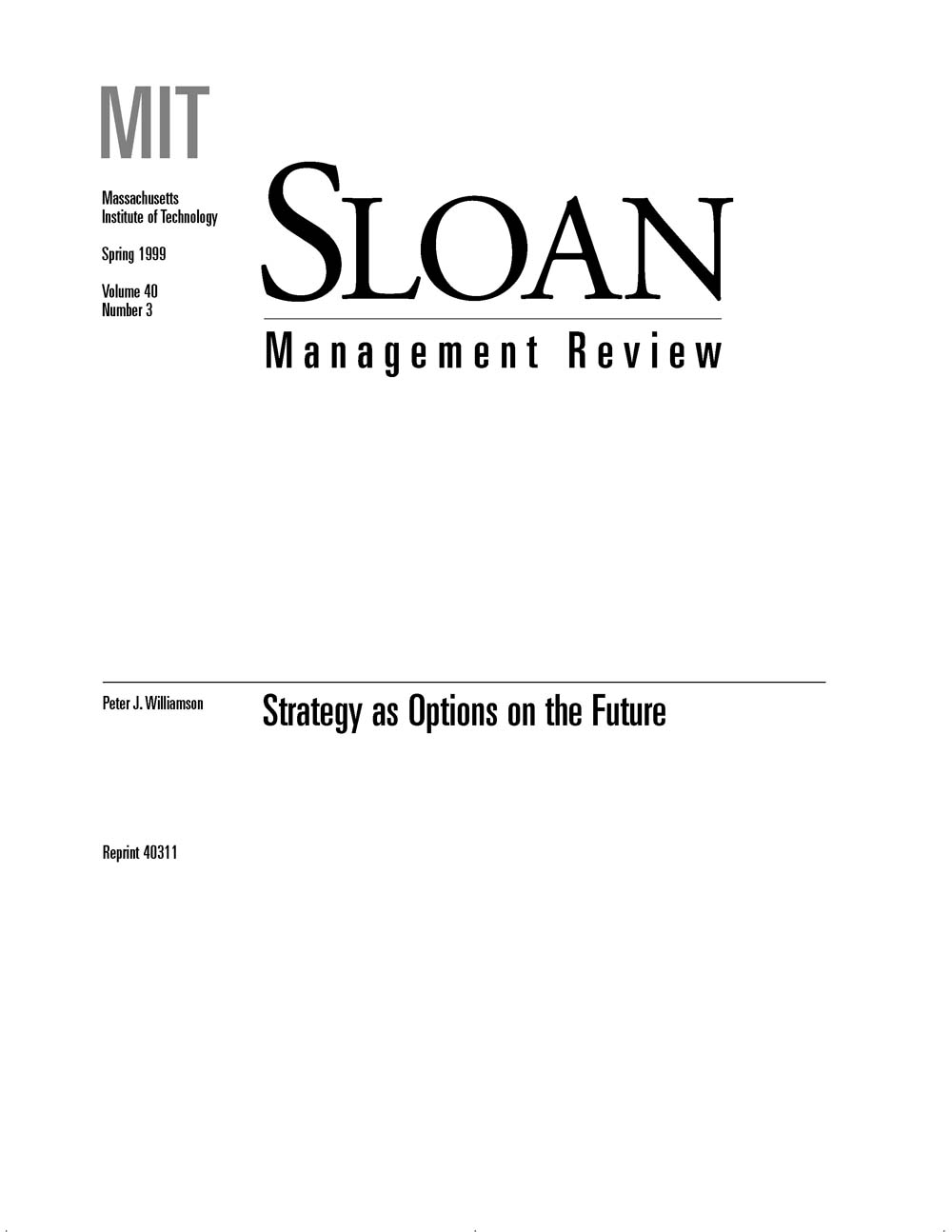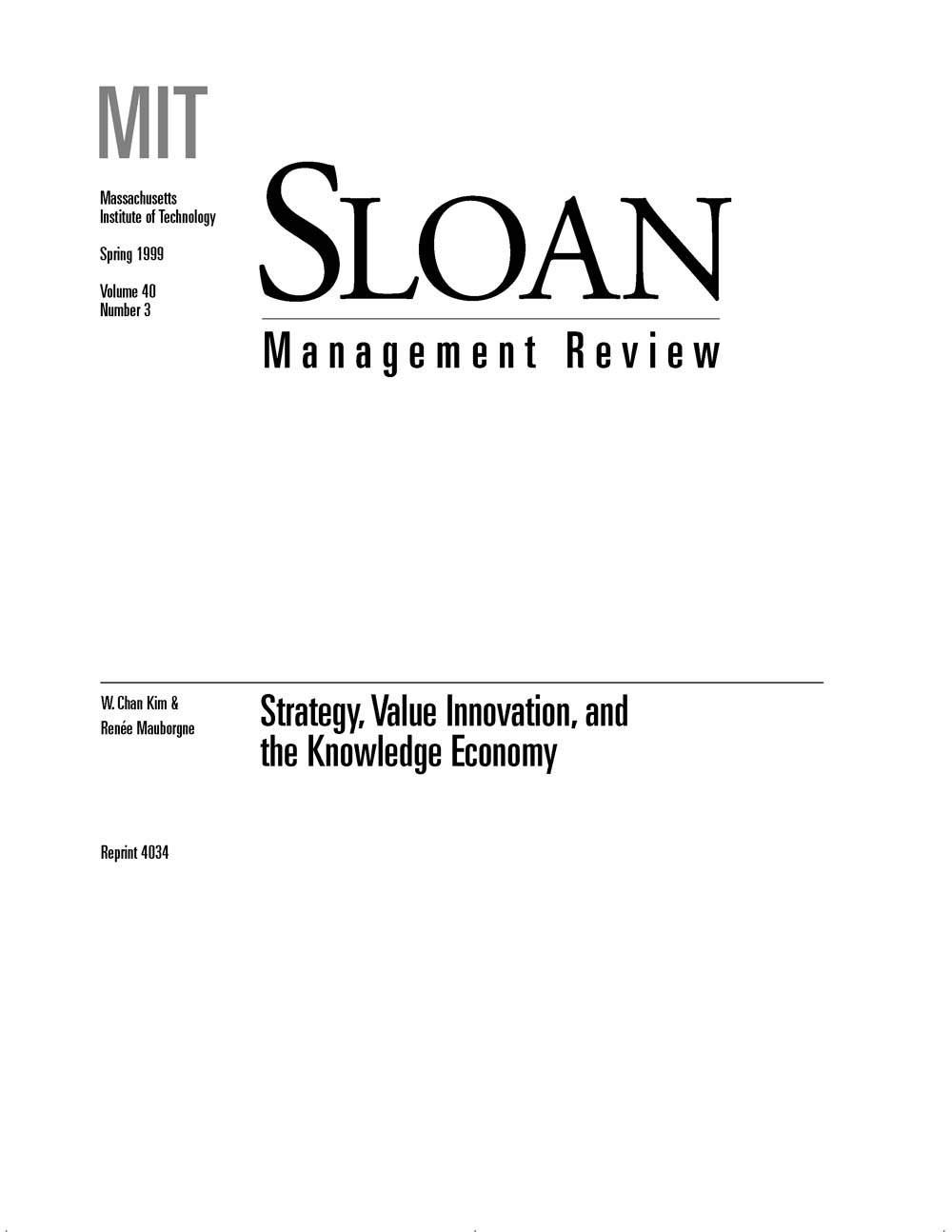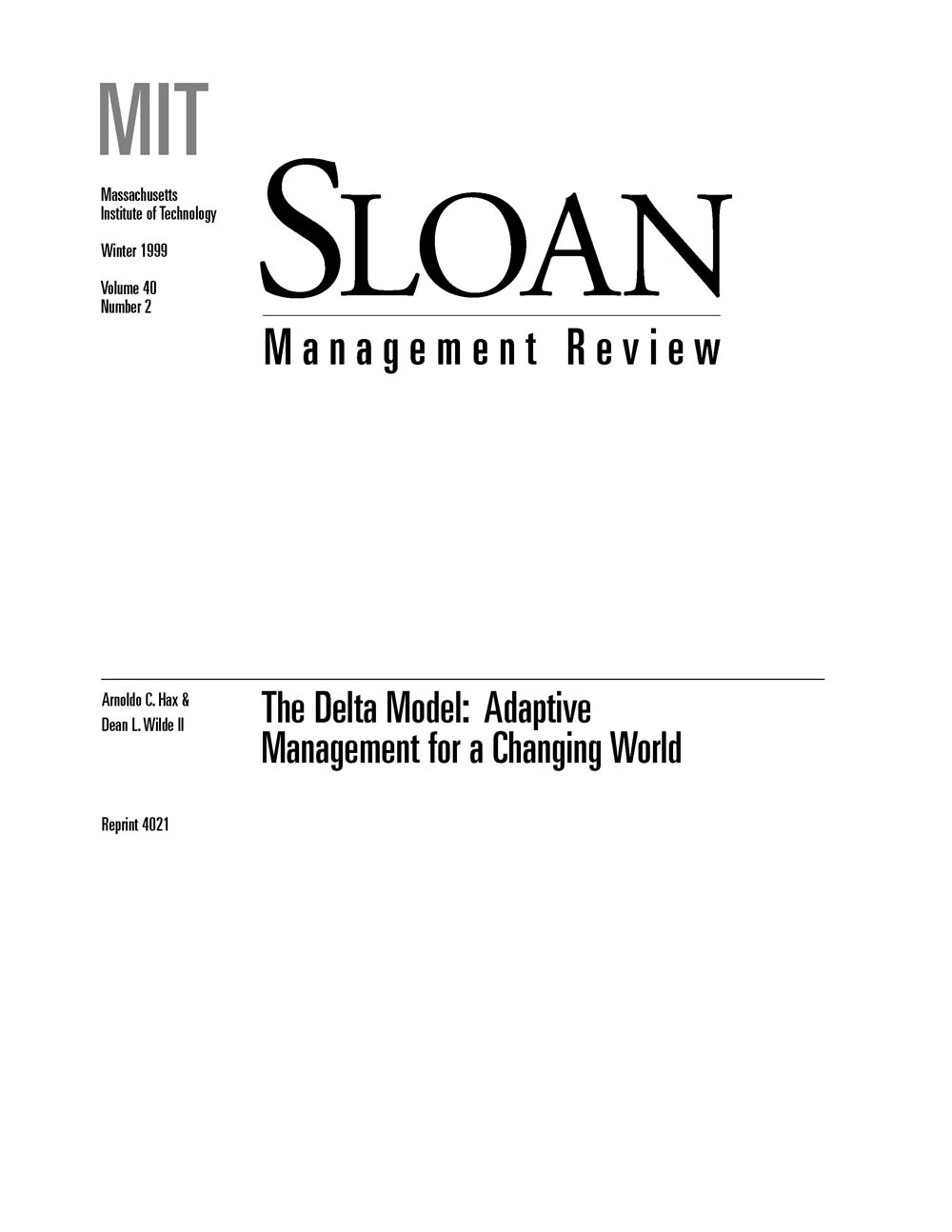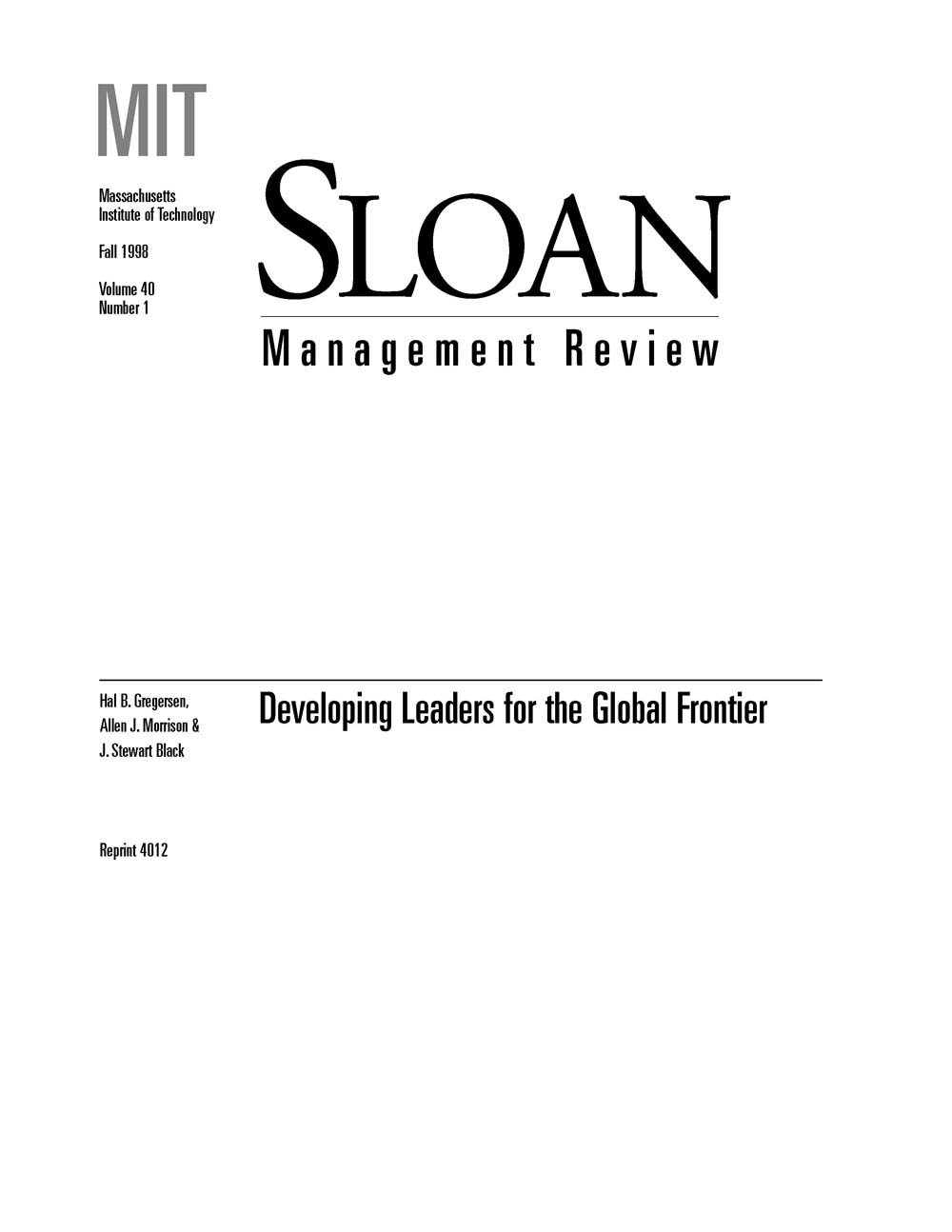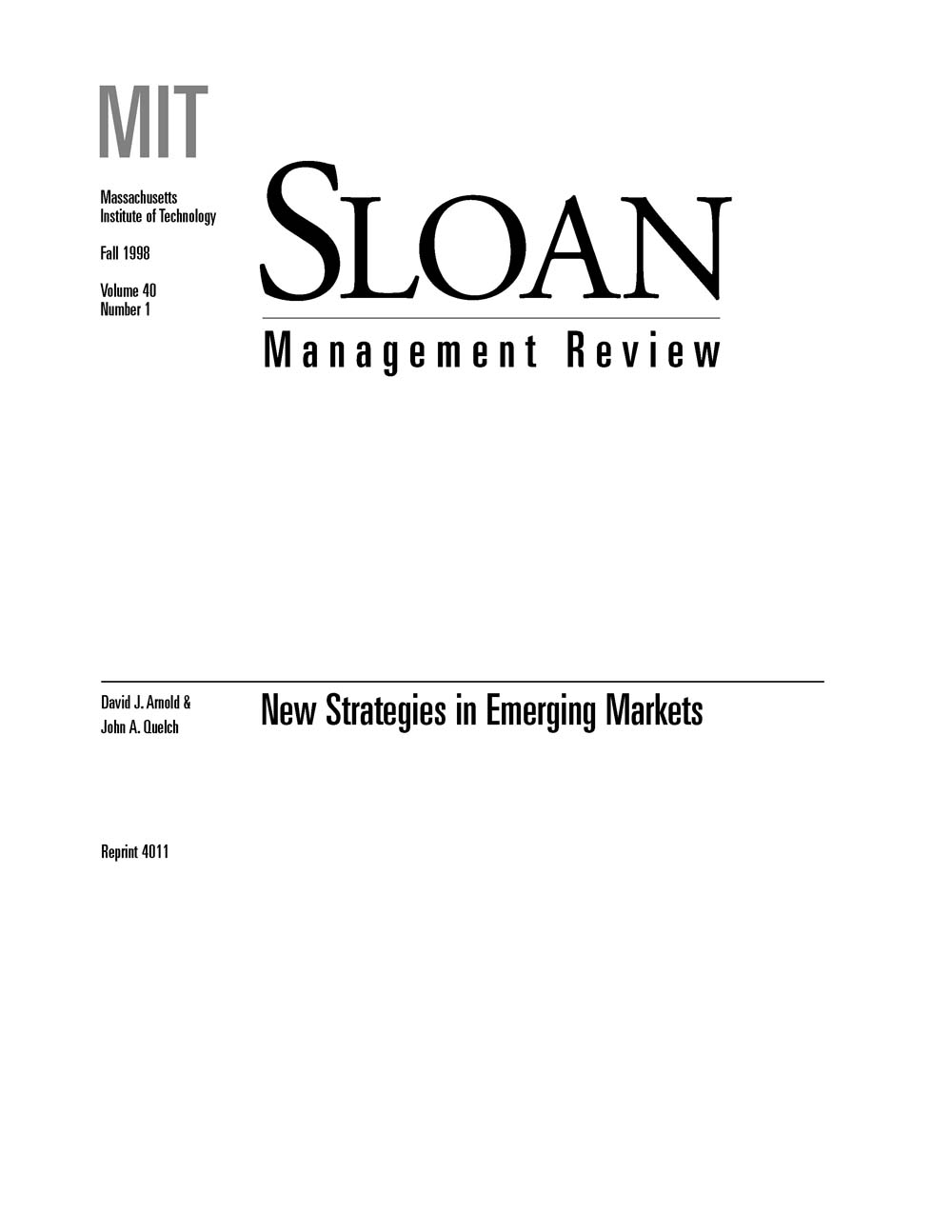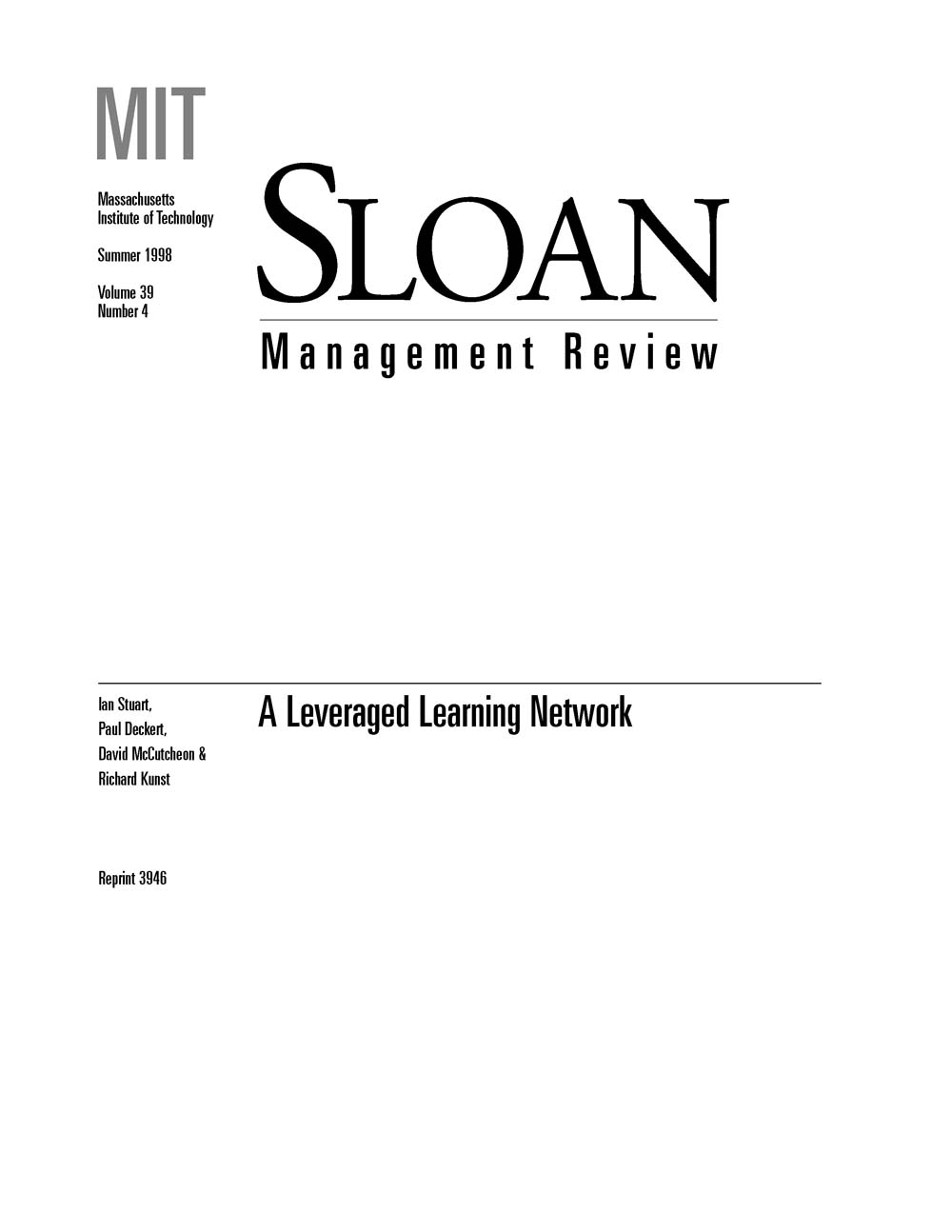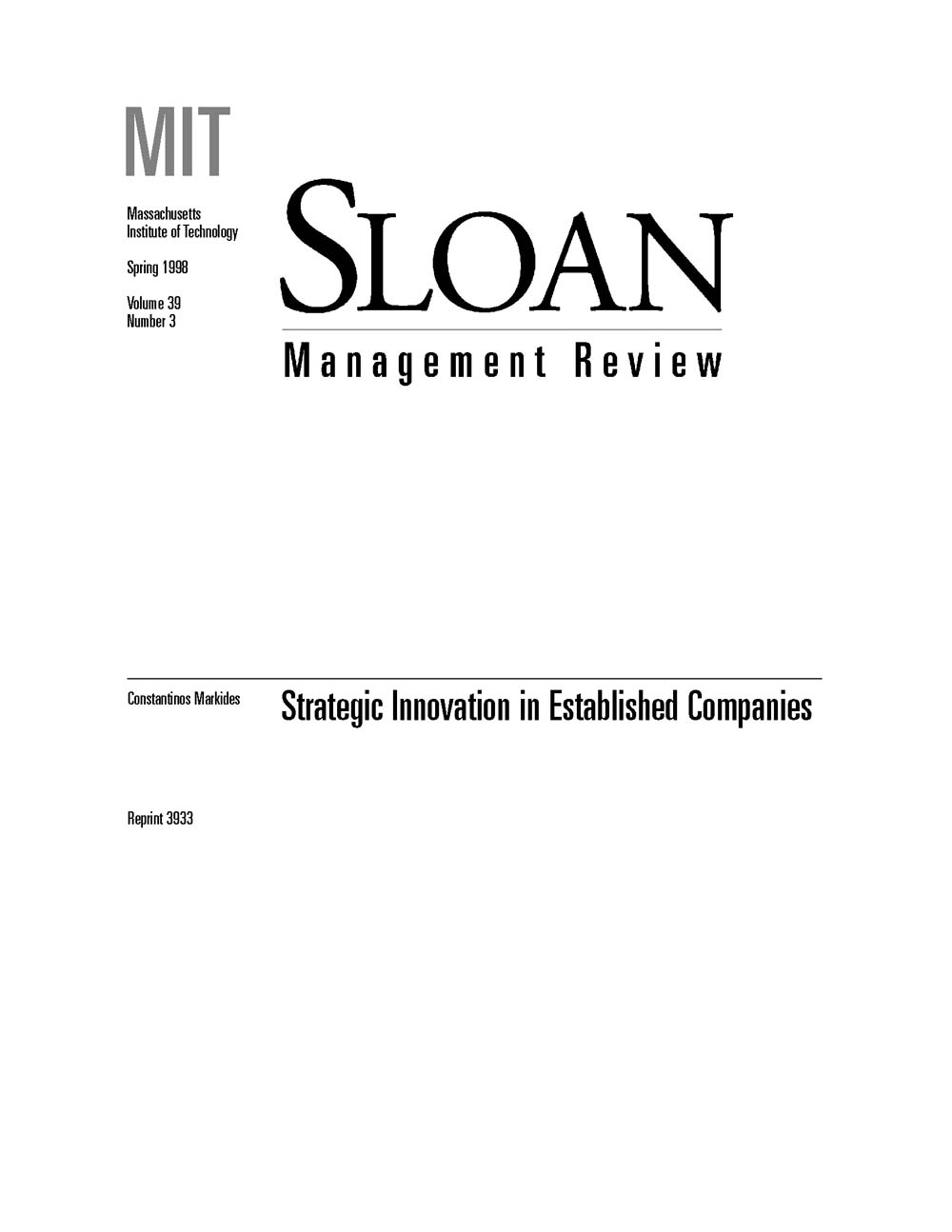Traditional strategic planning draws from forecasts of parameters like market growth, prices, exchange rates, and input costs that managers are unable to predict five or ten years in advance with any accuracy. Nevertheless, some firms meticulously construct strategic plans on the basis of forecasting that, in all probability, will be wrong. These companies tend to overinvest in building assets and capabilities that are highly specific to a particular strategy, relative to what would be optimal if planning explicitly acknowledged that forecasts would likely be off the mark. While companies may focus on executing a single strategy at any particular time, they must also build and maintain a portfolio of strategic options on the future. They must invest in developing new capabilities and learning about new, potential markets. By establishing a set of strategic options, a company can reposition itself faster than competitors that have focused on "doing more of the same." Williamson discusses a strategy that embodies a coherent portfolio of options, sketches a process managers can use to develop this kind of strategy, and explains how planning and management opportunism can reinforce each other. Creating a portfolio of future options involves: -- Uncovering the hidden constraints on a company's future -- both capability constraints and market-knowledge constraints. -- Establishing processes to minimize the costs of building and maintaining the portfolio. -- Optimizing the portfolio by considering (1) alternative capabilities that could profitably meet customer needs and (2) future markets or new customer behaviors. -- Combining planning and opportunism, both of which are essential to the proactive creation of strategic options. Williamson cautions that a company must keep tactical opportunism within the bounds of its overall direction, ruling out options that might cause it to deviate from its long-term mission. Short-term opportunism must determine which precise option a company chooses to exercise.
Strategy P. 18
Page 42 of 46
-
Strategy, Value Innovation, and the Knowledge Economy
Managers typically assess what competitors do and strive to do it better. Using this approach, companies expend tremendous effort and achieve only incremental improvement -- imitation, not innovation. By focusing on the competition, companies tend to be reactive, and their understanding of emerging mass markets and changing customer demands becomes hazy. During the past decade, Kim and Mauborgne have studied companies of sustained high growth and profits. All pursue a strategy, value innovation, that renders the competition irrelevant by offering new and superior buyer value in existing markets or by enabling the creation of new markets through quantum leaps in buyer value. Value innovation places equal emphasis on value and innovation, since innovation without value can be too strategic or wild, too technology-driven or futuristic. Hence, value innovation is not the same as value creation. Although value creation on an incremental scale creates some value, it is not sufficient for high performance. To value innovate, managers must ask two questions: "Is the firm offering customers radically superior value?" and "Is the firm's price level accessible to the mass of buyers in the target market?" A consequence of market insight gained from creative strategic thinking, value innovation focuses on redefining problems to shift the performance criteria that matter to customers. Kim and Mauborgne ask five key questions contrasting conventional competition-based logic with that of value innovation and describe the type of organization that best unlocks its employees' ideas and creativity. Rather than follow conventional practices for maximizing profits, successful value innovators use a different market approach that consists of (1) strategic pricing for demand creation and (2) target costing for profit creation. Value innovation as strategy creates a pattern of punctuated equilibrium, in which bursts of value innovation that reshape the industrial landscape are interspersed with periods of improvements, geographic and product-line extensions, and consolidation.
-
The Delta Model: Adaptive Management for a Changing World
Existing management frameworks do not describe all the ways that companies are competing successfully today. When queried, senior executives concurred that conventional theories and business practices do not provide the necessary guidance and support for decision making in a world of change, complexity, and uncertainty. The authors' research on more than 100 companies is the basis of their Delta model which (1) defines strategic positions that reflect fundamentally new sources of profitability, (2) aligns these strategic options with a firm's activities and provides congruency between strategic direction and execution, and (3) introduces adaptive processes capable of continually responding to an uncertain environment. They describe three strategic options having three distinct economic perspectives -- best product, customer solutions, and system lock-in. These strategic options provide a mechanism for defining the vision of a business. Outstanding real-life business successes achieved through strikingly different strategies and drawn from fundamentally different sources of profitability illustrate the nature of these strategic positions. The Delta model links strategy with execution by selecting a distinctive strategic position and then integrating it with a company's collective processes. The authors identify three fundamental processes that are always present and are the repository of key strategic tasks: operational effectiveness, customer targeting, and innovation. Strategy must adapt continuously, and implementation must respond to market changes and to greater understanding of the market that becomes apparent only during implementation. A firm's actions must be aligned with its strategic position, and the results must give feedback for adapting the strategy. The authors outline common responsive mechanisms for obtaining feedback from the adaptive processes and suggest metrics that are essential to adaptation. To anticipate the future, it is necessary to track performance against the adaptive processes, which are the initiatives enabling the strategy. The Delta model provides a rich overall framework that integrates a firm's options and activities without running the risk of oversimplifying the context in which it makes decisions.
-
Developing Leaders for the Global Frontier
Global business today requires leaders to be like explorers, guiding their organizations through unfamiliar and turbulent environments. With markets, suppliers, competitors, technology, and customers around the world constantly shifting, traditional leadership models no longer work. The authors' three-year study across Europe, North America, and Asia indicates that companies seek more global leaders and desire future global leaders of higher caliber and quality. To achieve these goals, organizations must understand the characteristics of global leaders and what they can do to develop these leaders. The research results reveal that every global leader needs certain core qualities: exhibiting character, or the capacity to build relationships with people from different backgrounds and to act with high ethical standards; embracing duality, or knowing when and whether to act and initiate change, depending on country or region; and demonstrating savvy, or recognizing worldwide market opportunities and understanding firm capabilities. Underlying each of these characteristics must be inquisitiveness -- a sense of adventure and a desire to experience new things. The authors' research further shows that global leaders are born and then made. Four strategies are particularly effective in developing global leaders: foreign travel, with immersion in the country's way of life; the formation of teams in which individuals with diverse backgrounds and perspectives work together closely; training that involves classroom and action learning projects; and overseas assignments, which serve to broaden the outlook of future global leaders.
-
New Strategies in Emerging Markets
Corporate executives need to rethink their marketing policies to reflect the distinctly different environments of EMs.
-
The Toyota Group and the Aisin Fire
The collaborative response of Toyota's suppliers to a devastating crisis holds lessons for businesses adopting the Japanese model of long-term supplier partnerships and for businesses moving away from that model. The cooperation and trust that develop in a supplier network promote flexible and coordinated responses to crises. They also foster long-term competitiveness through groupwide efforts to solve daily problems and improve performance. On February 1, 1997, a fire erupted at one of Aisin Seiki's plants. Aisin was the sole supplier of proportioning valves, a brake-related part used in all Toyota vehicles. Because Toyota and Aisin operated in a just-in-time environment, only a small supply of stock was on hand, and a costly shutdown of Toyota-group plants seemed unavoidable. Yet, through a self-organized effort by firms inside and outside the Toyota group to establish alternative P-valve production sites, assembly plants were reopened after only two days of shutdown. The effort was orchestrated with only limited direct control from Toyota and with no conflict over technical proprietary rights or financial compensation. The episode demonstrates the benefits of clustered firm networks. In a JIT environment, workers and managers acquire capabilities for effective problem solving. Several practices within the Toyota group, including knowledge sharing and regular transfers of employees among group firms, support efforts to develop these capabilities. These practices facilitate learning, encourage teamwork, and foster common understandings of operations among group members. Cooperation is also promoted by Toyota, which disseminates general approaches, giving firms the tools to self-organize and deal autonomously with emerging problems. Emulating Toyota's model is not easy. Nevertheless, by investing in supplier capabilities and promoting knowledge sharing among suppliers, firms can reap substantial gains in long-term competitive performance.
-
A Leveraged Learning Network
Growing recognition of the importance of supply chain management has prompted firms in the automotive industry to adopt new practices, including tiered supplier partnerships and supplier associations. While these approaches have been successful in the automotive industry, they may not be applicable to all firms. As an alternative, the authors propose the leveraged learning network. They use the experience of the High-Performance Manufacturing (HPM) Supplier Consortium developed by Allen Bradley Canada, a manufacturer of electric control panels, to explain how these networks operate and the results they achieve. The leveraged learning network is appropriate in cases where the buyer needs to improve supplier performance but lacks the power to compel the necessary improvements. Allen Bradley's initiatives to enhance supplier performance led to the development of a supply consortium; a reorganization culminated in the creation of HPM, a consortium of independent suppliers whose goal is "to work together to enable each member to optimize its competitiveness . . . using shared resources and experience." The consortium conducts a variety of education programs. A facilitator ensures that ideas and information flow continuously among the membership. Allen Bradley has greatly benefited from the suppliers' efforts to strive for world-class standards through reductions in defects, prices, and lead times; greater conformance to schedules; and better service. At the same time, the leveraged learning network poses difficulties, such as the buyer's forfeiture of control over membership and the need to dismiss members who fail to contribute sufficiently to the learning process. The challenge for managers and researchers is to determine the best conditions under which to choose either the tiered supplier partnership approach or the learning leveraged network. While the latter offers many potential opportunities, much work needs to be done to explore further its costs, benefits, and limitations.
-
Planning for Product Platforms
By sharing components and production processes across a platform of products, companies can develop differentiated products efficiently, make their manufacturing processes more flexible, and take market share away from competitors that develop only one product at a time. The platform approach also enables companies to manufacture products in high volumes that are tailored to meet the needs of individual customers. A platform is a collection of assets -- components, processes, knowledge, people, and relationships -- that are shared by a set of products. The platform planning effort involves two key tasks. First, product planning and marketing managers determine which market segments to enter, what the customers in each segment want, and what product attributes will appeal to those customers. Second, system-level designers decide what product architecture to use to deliver the different products while sharing parts and production steps across the products. Using an example from the automobile industry -- the design of an instrument panel, or dashboard -- the authors illustrate how the platform-planning process works. They point out three key ideas that underlie the process: 1. Customers care about distinctiveness, how closely the product meets their needs. At the same time, the cost of a firm's internal operations is driven by the level of parts held in common among a group of products. 2. Given a particular product architecture, a trade-off exists between distinctiveness and commonality. 3. Product architecture dictates the nature of the trade-off between distinctiveness and commonality. By developing and aligning three tools -- a product plan, a differentiation plan, and a commonality plan -- managers can balance the need for distinctiveness with the need for commonality. Together these tools provide a common language that a company's marketing, design, and manufacturing functions can all understand. To successfully meet the challenges inherent in the platform approach, the process must be cooperative, involving all key functions, and must be guided by top management.
-
Factors for New Franchise Success
While franchising has become the dominant mode of retailing in the United States, three-quarters of new franchise systems fail within twelve years. This high failure rate makes it important for potential franchisees to identify new franchisors that are likely to succeed and for franchisors to be aware of policies and practices that enhance long-term survival. To meet these needs, the authors present a model, based on a twelve-year study of 157 companies in 27 industries, of what makes new franchise systems succeed. The story of Newfran, a fictional composite of the successful new franchisors in the study, illustrates the key characteristics of success and their relationships to one another. For potential franchisees, the example of Newfran offers six criteria for selecting a new franchise system: 1. Seek franchisors that are expanding rapidly. Establishing brand name is crucial to success. A slowly growing franchise system may not be able to promote its brand name cost-competitively. 2. Do not seek a franchise system that promises a lot of field support. Field support is costly. New franchisors are better off devoting scarce resources to growing the franchise system. 3. Do not be dismayed by the lean headquarters of a new franchise system. A lean operation enhances growth and brand-name development. 4. Seek franchisors that are developing strong brand names. Indicators of brand-name value include a large system size relative to the industry average and the system's ranking in Entrepreneur Magazine. 5. Look for membership in the International Franchise Association and registration with state authorities. These associations provide a quality check on the franchise system and signal the franchisor's reliability. 6. Be wary of new franchisors that offer masterfranchising. Selling the responsibility to recruit and manage franchisees to another party allows the franchisor to grow more quickly but increases the probability of system failure. For new franchisors, these criteria highlight the need to develop the brand name, expand rapidly, and show a trustworthy nature to potential franchisees. Following the policies identified in the study does not guarantee success but significantly increases a franchise system's prospects.
-
Strategic Innovation in Established Companies
Compared to new companies or niche players, established companies find it difficult to innovate strategically -- to reconceptualize what the business is all about and, as a result, to play the game in an existing business in a dramatically different way. Drawing on examples of highly profitable companies in diverse industries, the author explains how long-time players can overcome the four chief obstacles to strategic innovation. 1. Inertia of success. Strategic innovators monitor their strategic health for early signals of trouble and are willing, if necessary, to abandon the status quo for the uncertainty of change. These companies also work to convince employees that current performance is good but not good enough. They develop a new challenge to galvanize the organization into active thinking, and they expend significant time and effort selling the challenge to everyone. 2. Uncertainty about what to change into. Strategic innovators challenge their dominant way of thinking and shift emphasis away from determining how they need to compete toward questioning who their customers are and what they really want. They institutionalize a questioning attitude and find ways to shake up the system every few years. 3. Uncertainty surrounding new strategic positions. At a given time, a company does not know which idea will succeed and which core competencies will be essential. Successful strategic innovators follow the model of capitalism: they create internal variety, even at the expense of efficiency, and allow the outside market to decide the winners and losers. 4. The challenges of implementation. Successful companies set up a separate organizational unit to support a new strategic innovation and create a context that supports integration between different units within the company. In managing the transition from the old to the new, they let the two systems coexist but gradually allocate resources to the new so that it grows at the expense of the old. For established companies, the challenge of strategic innovation is organizational: developing a culture that questions current success while promoting experimentation. Strong leadership is essential in creating that culture. Only those companies that strive for self-renewal, the author argues, will succeed in the long term.



